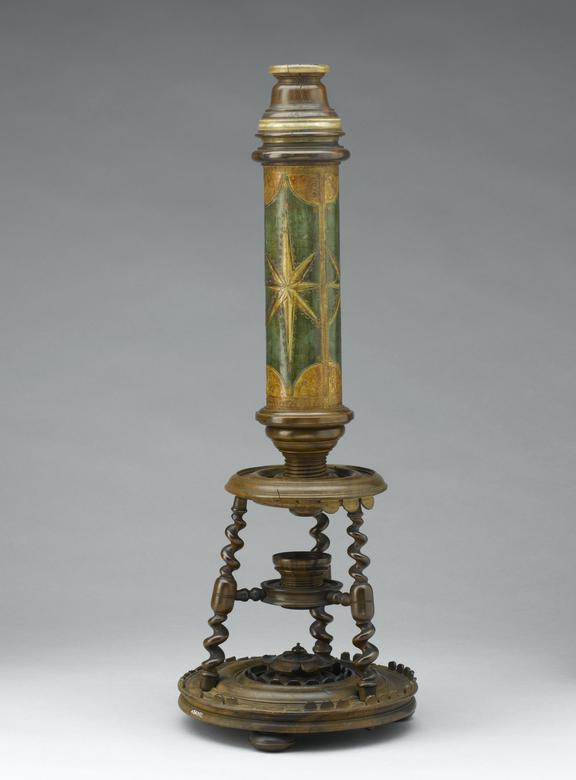Body Tube for Compound monocular microscope, Europe, 1681-1720
Green tooled leather body tube and lenses for compound monocular microscope, German or Italian, C.1700.
This ornate compound microscope was made around a century after the first prototype microscopes of this type were allegedly developed by Dutch eye-glass maker Zaccharias Janssen and his son Hans – this claim is the subject of some dispute. Unlike single lens microscopes, compound microscopes contain at least two lenses.
The tube of this microscope is covered in vellum – a fine type of parchment made from the skin of a young calf or goat. The mount is made from walnut. This microscope may have been a source of entertainment and used to study a wide variety of animals, vegetables and minerals. It is only since the 1800s that microscopes have become central to medicine.
- Measurements:
-
overall: 337 mm 57 mm,
- Materials:
- glass , pasteboard , vellum , horn and walnut (wood)
- Object Number:
- A56283/1
- type:
- monocular microscope







